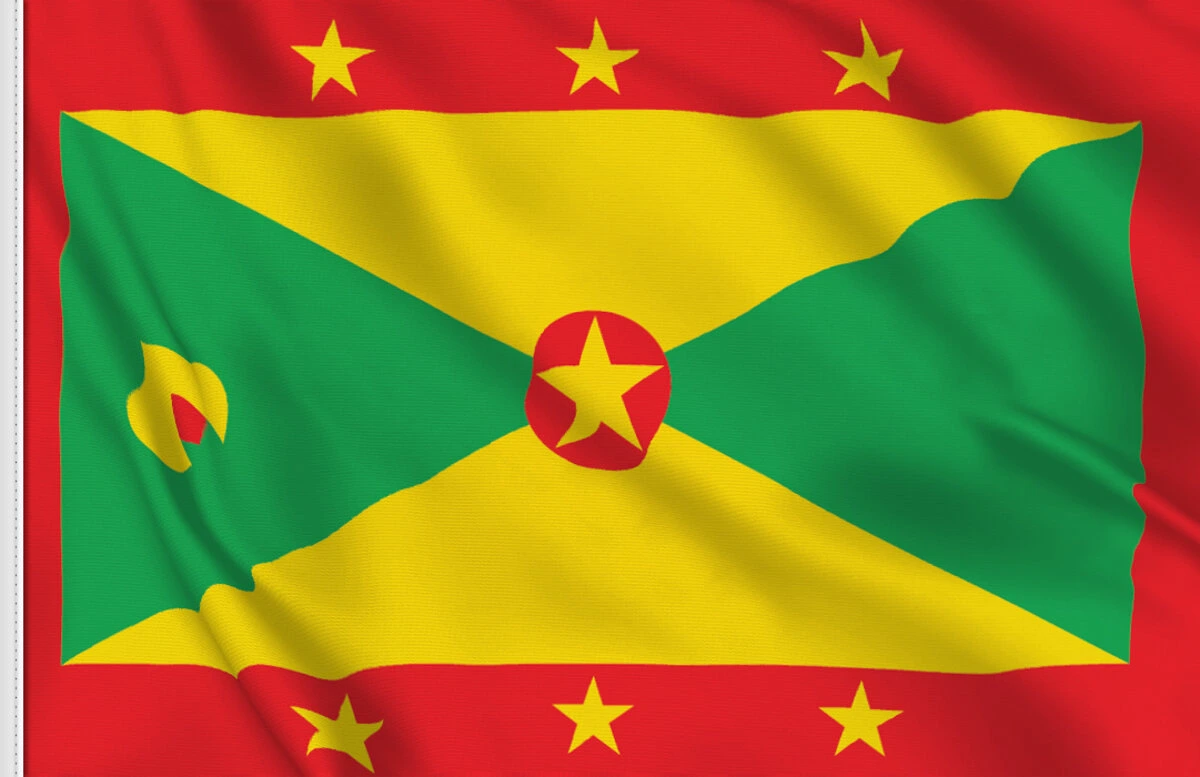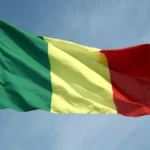
Welcome to our exploration of Grenada, the enchanting Caribbean island known as the “Spice Isle.” With its stunning landscapes, rich history, and vibrant culture, Grenada offers a unique blend of natural beauty and intriguing stories. From its colonial past to its thriving festivals, this island is filled with fascinating facts that highlight its charm and character. Whether you’re planning a visit, curious about its heritage, or simply looking to expand your knowledge, join us as we uncover 25 interesting facts about Grenada that showcase why this destination is truly one-of-a-kind. Get ready to dive into the captivating world of Grenada!
Location: Grenada is situated in the Caribbean Sea, specifically in the southern part of the Lesser Antilles. It lies approximately 160 kilometers (100 miles) north of Venezuela and is surrounded by the Caribbean Sea to the west and the Atlantic Ocean to the east. Its geographical coordinates are approximately 12.1165° N latitude and 61.6790° W longitude. The island’s position makes it a popular destination for tourists seeking warm weather and beautiful scenery.
Capital: St. George’s, the capital city of Grenada, is renowned for its picturesque harbor and charming colonial architecture. The city is built on a series of hills, providing stunning views of the surrounding waters. St. George’s is also home to Fort George, a historical site that dates back to 1705. The vibrant market in the city offers a variety of local produce, spices, and crafts, reflecting the island’s cultural heritage and economic activities.
Area: Covering an area of approximately 344 square kilometers (133 square miles), Grenada is relatively small compared to many other Caribbean nations. The island’s diverse landscape includes lush rainforests, mountainous terrain, and beautiful sandy beaches. The highest point on the island is Mount Saint Catherine, which rises to 840 meters (2,755 feet) above sea level. This varied geography contributes to the island’s rich biodiversity and natural beauty.
Population: As of the last census, Grenada has a population of about 112,000 people. The population is predominantly of African descent, with a mix of East Indian, European, and indigenous Carib influences. The demographic distribution reflects a vibrant culture characterized by a blend of traditions, languages, and customs. The majority of the population resides in urban areas, particularly in and around St. George’s, while rural communities are often engaged in agriculture and fishing.
Official Language: The official language of Grenada is English, reflecting its colonial history under British rule. English is used in government, education, and media, making it accessible for international visitors. Additionally, many Grenadians speak a local dialect known as “Grenadian Creole” or “Patois,” which incorporates elements of French and African languages. This linguistic diversity adds to the cultural richness of the island and is evident in local music, storytelling, and everyday conversations.
Currency: The currency used in Grenada is the Eastern Caribbean dollar (XCD), which is shared by several other countries in the Eastern Caribbean region. The exchange rate is pegged to the US dollar, making it relatively stable for international trade and tourism. The Eastern Caribbean Central Bank issues the currency, and it is subdivided into 100 cents. Tourists often find that credit cards are widely accepted, but having local currency is useful for smaller purchases and markets.
Independence: Grenada gained independence from the United Kingdom on February 7, 1974, marking a significant milestone in its history. The transition to independence was celebrated with great enthusiasm, and the country adopted a new national flag and anthem. Independence Day is a public holiday in Grenada, and it is celebrated with various events, including parades, cultural performances, and speeches reflecting on the nation’s journey toward self-governance and identity.
National Motto: The national motto of Grenada, “The Isle of Spice,” highlights the island’s historical association with spice production, particularly nutmeg and mace. This motto reflects the island’s agricultural heritage and its reputation as a significant exporter of spices in the Caribbean. The cultivation of these spices has shaped Grenada’s economy and cultural identity, with festivals and events often celebrating this aspect of the island’s history.
Economy: Grenada’s economy is primarily based on tourism, agriculture, and services. Tourism plays a crucial role, attracting visitors to its stunning beaches, lush landscapes, and rich cultural experiences. Agriculture, particularly the cultivation of nutmeg, cocoa, and other spices, remains vital to the economy, providing employment and export opportunities. The service sector, including banking and education, also contributes significantly to the island’s economic growth and development.
Nutmeg Production: Grenada is famously known as the “Nutmeg Capital of the World,” producing approximately 20% of the world’s nutmeg supply. The island’s climate and fertile soil create ideal conditions for growing nutmeg trees, which thrive in the tropical environment. Nutmeg is a key export product and has historically played a significant role in Grenada’s economy. The nutmeg industry is not only vital for economic reasons but also deeply embedded in the cultural fabric of the island, influencing local cuisine and traditions.
Islands: Grenada consists of the main island of Grenada and six smaller islands, including Carriacou and Petite Martinique. Carriacou, located about 20 miles northeast of Grenada, is known for its beautiful beaches and traditional boat-building culture. Petite Martinique, even smaller than Carriacou, is famous for its fishing and vibrant local community. These smaller islands contribute to Grenada’s charm, offering visitors a chance to explore unspoiled nature, local traditions, and a slower pace of life.
Climate: Grenada has a tropical climate characterized by warm temperatures and distinct wet and dry seasons. The average annual temperature hovers around 27°C (81°F), making it a year-round destination for sun-seeking tourists. The wet season typically runs from June to November, coinciding with the Atlantic hurricane season, while the dry season lasts from December to May. The island’s lush vegetation and abundant rainfall during the wet months create a vibrant landscape filled with diverse flora.
Tourism: The tourism industry is a significant part of Grenada’s economy, with visitors drawn to its stunning beaches, crystal-clear waters, and rich cultural heritage. Popular tourist attractions include Grand Anse Beach, known for its soft white sand, and the underwater sculpture park, which combines art and marine conservation. Grenada also offers opportunities for hiking, sailing, and experiencing local festivals, making it an attractive destination for adventure seekers and those looking to relax in a beautiful setting.
Flora and Fauna: Grenada is home to a diverse range of flora and fauna, thanks to its varied ecosystems. The island’s rainforests, coastal areas, and coral reefs provide habitats for numerous species. One notable species is the endangered Grenada Dove, which is a symbol of the island’s commitment to conservation. The rich biodiversity attracts nature enthusiasts and eco-tourists who come to explore the natural beauty and participate in conservation efforts, such as bird-watching and snorkeling.
Cultural Heritage: Grenada boasts a rich cultural heritage influenced by African, French, and British traditions. This blend is evident in the island’s music, dance, and festivals. Traditional music genres such as calypso, soca, and reggae are popular, with local artists often performing at events and celebrations. The island’s cultural diversity is also reflected in its cuisine, which features a mix of spices, fresh seafood, and local produce, showcasing the flavors of its history and influences.
Carnival: The annual Carnival, known as “Spicemas,” is one of Grenada’s most vibrant and celebrated events, taking place in August. This festival features colorful parades, lively music, and elaborate costumes, drawing participants and spectators from around the world. The celebration includes competitions, parties, and cultural performances, showcasing the island’s artistic talent and community spirit. Spicemas is a time for Grenadians to express their creativity and pride in their heritage, making it a highlight of the cultural calendar.
Education: Grenada has a literacy rate of approximately 98%, reflecting the country’s commitment to education and access to learning opportunities. The education system is structured into primary, secondary, and tertiary levels, with several institutions offering vocational training and higher education. The government places a strong emphasis on education as a means of fostering personal development and economic growth, ensuring that the population is equipped with the skills needed for various industries.
Geography: The island of Grenada is volcanic in origin, featuring hilly terrain and a diverse landscape that includes mountains, beaches, and rainforests. The highest point on the island is Mount Saint Catherine, which rises to 840 meters (2,755 feet) above sea level. The island’s geography contributes to its stunning natural beauty, with numerous hiking trails and scenic viewpoints that offer breathtaking panoramas of the Caribbean Sea and surrounding islands.
Marine Life: The waters surrounding Grenada are renowned for their rich marine life, making it a popular destination for scuba diving and snorkeling. The underwater sculpture park, located off the coast of Moliniere Bay, features submerged sculptures that promote coral reef growth and provide habitats for marine species. Divers and snorkelers can explore vibrant coral reefs, underwater caves, and an abundance of fish species, making Grenada a top choice for marine enthusiasts seeking adventure.
Historical Sites: Fort George, built in 1705, is one of Grenada’s most significant historical landmarks, located in St. George’s. The fort offers panoramic views of the harbor and the city, providing insight into the island’s colonial past. Visitors can explore the fort’s well-preserved structures and learn about its role in various historical events, including the 1983 U.S. invasion. Fort George serves as a reminder of Grenada’s strategic importance in the Caribbean and its colonial history, making it a popular site for tourists interested in the island’s heritage. In addition to Fort George, other historical sites include Fort Frederick, which also offers stunning views and insight into Grenada’s military history, and the Grenada National Museum, where visitors can learn about the island’s cultural and historical evolution through various exhibits.
Revolution: Grenada underwent a significant political upheaval in 1979 when a revolutionary movement led by Maurice Bishop overthrew the existing government. This event marked the beginning of a brief period of socialist governance, which aimed to implement various social reforms and improve the living standards of its citizens. Bishop’s government focused on education, healthcare, and infrastructure development, aligning Grenada more closely with socialist ideologies. However, this period was tumultuous and ended in 1983 with a U.S.-led invasion, which sought to restore order and protect American citizens on the island, as well as to prevent the establishment of a communist government.
UNESCO World Heritage Site: The historic city of St. George’s, the capital of Grenada, is renowned for its colonial architecture and rich history, which contributed to its designation as a UNESCO World Heritage Site. The city is characterized by its picturesque harbor, colorful buildings, and well-preserved historical sites, including Fort George and Fort Frederick. St. George’s reflects the colonial past of Grenada, showcasing influences from the French and British colonial periods. The city is also a hub for cultural activities and offers a glimpse into the island’s vibrant heritage, making it a significant location for both residents and visitors.
Transportation: Maurice Bishop International Airport serves as Grenada’s primary gateway for international travel, facilitating connections to various destinations across the Caribbean, North America, and Europe. Located approximately 8 miles from the capital, St. George’s, the airport plays a crucial role in the island’s tourism industry, which is vital for its economy. The airport is equipped with modern facilities and services to accommodate both domestic and international flights, ensuring that travelers have a convenient and efficient experience when arriving or departing from Grenada.
Festivals: Grenada is known for its lively festivals that celebrate the island’s rich culture, music, and culinary traditions. One of the most famous events is the annual Grenada Carnival, held in August, which features vibrant parades, colorful costumes, and energetic music, including soca and calypso. Other notable festivals include the Spice Mas, which celebrates Grenada’s reputation as the “Spice Isle,” and the Grenada Chocolate Festival, highlighting the island’s cocoa production. These festivals not only provide entertainment but also foster community spirit and attract tourists, showcasing the diverse cultural heritage of Grenada.
National Bird: The Grenada Dove, a symbol of the island’s natural heritage, is the national bird of Grenada. This species is unique to the island and is known for its striking appearance, characterized by its grayish-brown plumage and distinctive white-tipped tail. The Grenada Dove is a vulnerable species, primarily due to habitat loss and predation by introduced species. Conservation efforts are underway to protect this bird and its habitat, emphasizing the importance of biodiversity on the island. The Grenada Dove serves as a reminder of the need to preserve the island’s natural environment and the unique species that inhabit it.
Frequently Asked Questions about Grenada
General Information
1. Where is Grenada located? Grenada is a Caribbean island nation located in the southernmost part of the Windward Islands chain. It consists of the main island of Grenada and two smaller islands, Carriacou and Petite Martinique.
2. What is the capital of Grenada? The capital of Grenada is St. George’s.
3. What is the currency of Grenada? The official currency of Grenada is the East Caribbean Dollar (XCD).
4. What language is spoken in Grenada? The official language of Grenada is English. However, many locals also speak Grenadian Creole, a dialect of English.
5. What is the climate like in Grenada? Grenada has a tropical climate with warm temperatures year-round. The average temperature ranges from 24°C to 30°C (75°F to 86°F). The dry season typically lasts from December to May, while the wet season is from June to November.
6. What is the best time to visit Grenada? The best time to visit Grenada is during the dry season, from December to May. This is when the weather is the most pleasant, with less rainfall and lower humidity.
7. What are the main attractions in Grenada? Grenada offers a variety of attractions, including:
- Grand Etang National Park: A lush rainforest with a crater lake.
- Spice plantations: Where you can learn about and sample various spices, such as nutmeg, cinnamon, and cloves.
- Beaches: Beautiful beaches with crystal-clear waters, such as Grand Anse Beach and Morne Rouge Beach.
- Underwater sculpture park: A unique underwater art exhibit.
- Carriacou and Petite Martinique: Two smaller islands with stunning beaches, coral reefs, and traditional Caribbean culture.
8. What is the culture like in Grenada? Grenadian culture is a vibrant mix of African, European, and Caribbean influences. Music, dance, and food are important aspects of the culture. The annual Spice Mas festival is a major cultural event that attracts visitors from around the world.
9. What is the food like in Grenada? Grenadian cuisine is a fusion of African, Caribbean, and European flavors. Popular dishes include oil down (a stew made with salted cod, callaloo, and dumplings), souse (a spicy meat dish), and fish cakes.
10. Is Grenada safe for tourists? Grenada is generally a safe destination for tourists. However, it is always important to take precautions, such as avoiding isolated areas at night and being aware of your surroundings.
Travel Tips
1. Do I need a visa to visit Grenada? Most visitors to Grenada do not require a visa for stays of up to 90 days. However, it is always best to check with the Grenadian embassy or consulate in your country for the most up-to-date information.
2. What vaccinations are recommended for Grenada? It is recommended that visitors to Grenada be up-to-date on routine vaccinations, such as measles, mumps, rubella, tetanus, diphtheria, pertussis, polio, influenza, and chickenpox. Depending on your itinerary and length of stay, additional vaccinations may be recommended, such as hepatitis A and B, typhoid, and rabies. Consult with a healthcare provider or travel clinic for personalized advice.
3. What is the best way to get to Grenada? The main way to get to Grenada is by air. Maurice Bishop International Airport is the main airport in Grenada and receives flights from various international destinations.
4. What is the best way to get around Grenada? The best way to get around Grenada is by renting a car. However, public transportation is also available, including buses and taxis.
5. What is the cost of living in Grenada? The cost of living in Grenada is relatively low compared to many other Caribbean destinations. However, prices can vary depending on your lifestyle and where you choose to stay.
I hope this information is helpful. Please let me know if you have any other questions.









